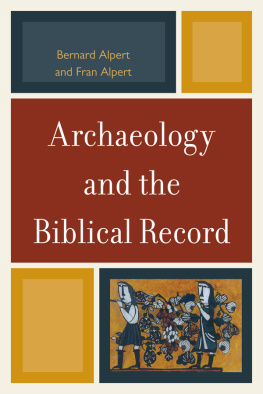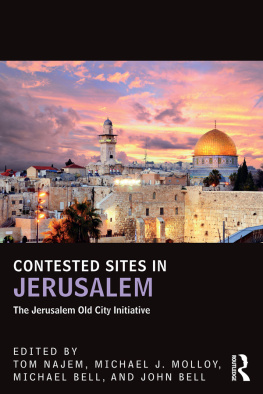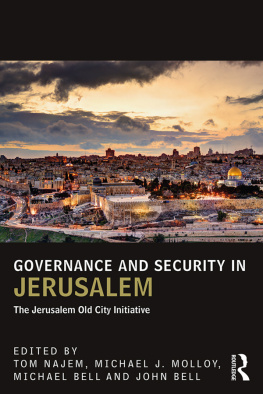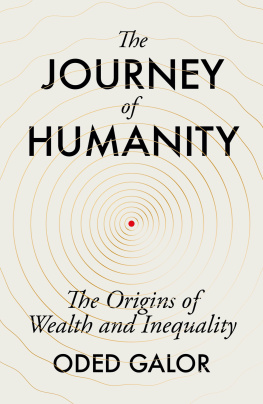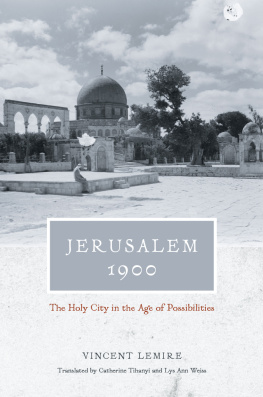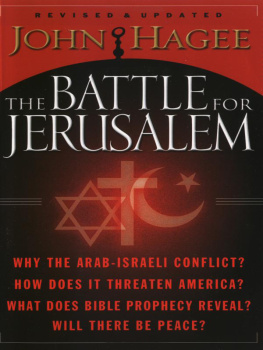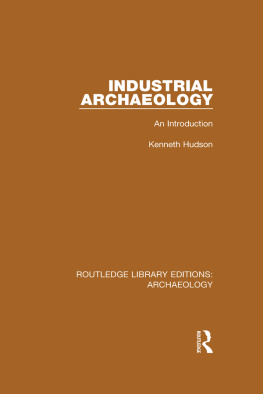Galor KatharinaBloedhorn Hanswulf - The Archaeology of Jerusalem
Here you can read online Galor KatharinaBloedhorn Hanswulf - The Archaeology of Jerusalem full text of the book (entire story) in english for free. Download pdf and epub, get meaning, cover and reviews about this ebook. year: 2013, publisher: YaleUP, genre: Children. Description of the work, (preface) as well as reviews are available. Best literature library LitArk.com created for fans of good reading and offers a wide selection of genres:
Romance novel
Science fiction
Adventure
Detective
Science
History
Home and family
Prose
Art
Politics
Computer
Non-fiction
Religion
Business
Children
Humor
Choose a favorite category and find really read worthwhile books. Enjoy immersion in the world of imagination, feel the emotions of the characters or learn something new for yourself, make an fascinating discovery.

- Book:The Archaeology of Jerusalem
- Author:
- Publisher:YaleUP
- Genre:
- Year:2013
- Rating:3 / 5
- Favourites:Add to favourites
- Your mark:
- 60
- 1
- 2
- 3
- 4
- 5
The Archaeology of Jerusalem: summary, description and annotation
We offer to read an annotation, description, summary or preface (depends on what the author of the book "The Archaeology of Jerusalem" wrote himself). If you haven't found the necessary information about the book — write in the comments, we will try to find it.
The Archaeology of Jerusalem — read online for free the complete book (whole text) full work
Below is the text of the book, divided by pages. System saving the place of the last page read, allows you to conveniently read the book "The Archaeology of Jerusalem" online for free, without having to search again every time where you left off. Put a bookmark, and you can go to the page where you finished reading at any time.
Font size:
Interval:
Bookmark:
The Archaeology of Jerusalem
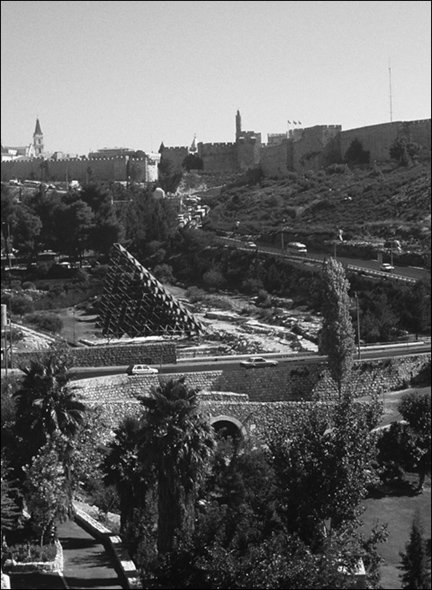
Katharina Galor and Hanswulf Bloedhorn
Yale UNIVERSITY PRESS NEW HAVEN AND LONDON
Published with assistance from the Louis Stern Memorial Fund.
Copyright 2013 by Yale University. All rights reserved. This book may not be reproduced, in whole or in part, including illustrations, in any form (beyond that copying permitted by Sections 107 and 108 of the U.S. Copyright Law and except by reviewers for the public press), without written permission from the publishers.
Yale University Press books may be purchased in quantity for educational, business, or promotional use. For information, please e-mail sales.press@yale.edu (U.S. office) or sales@yaleup.co.uk (U.K. office).
Designed by Nancy Ovedovitz and set in Janson type by Keystone Typesetting, Inc.
Printed in the United States of America.
Frontispiece photo: Detail of plate 2. Photo H. Bloedhorn.
Library of Congress Cataloging-in-Publication Data
Galor, Katharina.
The archaeology of Jerusalem : from the origins to the Ottomans / Katharina Galor and Hanswulf Bloedhorn.
pages cm
Includes bibliographical references and index.
ISBN 978-0-300-11195-8 (cloth : alk. paper) 1. Excavations (Archaeology)JerusalemHistory. 2. JerusalemAntiquities. I. Bloedhorn, Hanswulf. II. Title.
DS109.15.G35 2013 956.9442dc23 2013011381
A catalogue record for this book is available from the British Library.
This paper meets the requirements of ANSI/NISO Z39.48-1992 (Permanence of Paper).
10 9 8 7 6 5 4 3 2 1
To our respective sons,
Alon, Yuval, Omri
and
Constantin
The complexity of Jerusalems history and of the relationship between the citys material culture and written documents can be paralleled with other major capitals in the ancient world, such as Athens, Rome, Constantinople, Cairo, and Damascus. Yet, something beyond the material and written remains has contributed to the long-lasting effects of Jerusalems cultural and religious developments. Whether guided by the desire to prove or disprove a certain spiritual presence and its physical manifestations, and regardless of whether one is a religiously inspired or scientifically trained scholar, the goal is always to reconstruct the truth as closely as possible. It is not our intention here to rehash the many contributions that have been made to the archaeology of Jerusalem, nor shall we claim that we have now come closer than others before us to understanding the past. We have strived to create a tangible retrospective of the archaeology of the city from the beginnings through the Ottoman period. One of our most difficult tasks was to include only the information we deemed necessary for obtaining a general understanding of the citys history without overwhelming the reader with facts that are indeed interesting but nonetheless tangential.
The wealth of the textual evidence and the ever-growing material data exposed by archaeologists over nearly 175 years has caused the field to become increasingly dichotomized and fragmented, making the general readers grasp and familiarity with Jerusalems myriad archaeological finds difficult and unwieldy. It is not surprising, then, that the generation of scholars excelling in both the textual and material cultures of the city is waning and that scholars working in the biblical periods no longer venture into the classical and later periods, and vice versa. More importantly for the framework of this book, specialists of the biblical periods are usually trained differently and work independently of scholars of the classical periods, and the scope and knowledge of specialists working in the early periods rarely overlap with the cultural, religious, and chronological frameworks of those studying the medieval period. The large number of monographs dealing with minor topics and specific periods is the result of an almost insuperable amount of material remains uncovered in Jerusalem to date. As in many other parts of the ancient world, scholarly activitypreliminary and final reports, as well as the more theoretical and analytical studiesseems to be lagging behind the seemingly bottomless pit of the citys ancient treasures. The need to assimilate this wealth of ancient material culture and organize it in an accessible fashion has been articulated by many, yet the few publications that indeed cover most of the citys more than three thousand years of existence are either clearly outdated or too concerned with religious, political, or touristic aspects of the city.
Our primary goal in this book is, therefore, to create a newly updated survey of Jerusalems archaeology that will serve a large readership: those who are familiar with only a sub-category of archaeological findings or a particular chronological time span as well as those who are new to this field.
In order to organize the material in an accessible way, we decided to proceed chronologically, devoting each chapter to a major period. We open with a brief historical outline based primarily on the written texts and then proceed to describe in detail the material culture, mainly architecture and a selection of representative and/or unique small finds.
Given the importance of Jerusalem to three major monotheistic religions, we felt it essential to cover a wide time span, beginning with the Chalcolithic period in the fourth millennium B.C.E. and ending with the Ottoman period in 1917 C.E. The range of periods demanded that all the chapters offer a distinct treatment of the material evidence. The nature of the remains from each period and the resulting agendas of the various archaeological reports and analyses largely determined the focus of individual chapters. Whereas a more detailed treatment of water and fortification systems was deemed necessary for the early periods (Bronze and Iron Ages), a stronger emphasis on city planning and monumental architecture was required for the later periods (most importantly the Graeco-Roman period); unlike the focus on civic architecture in the Graeco-Roman period, a more attentive treatment of sacral architecture was necessary for the Byzantine period; finally, the archaeology of standing monuments characterizing the latest periods covered here, the Early Islamic through the Ottoman period, warranted a slightly different approach.
Other than in the introduction, where some of the leading archaeologists who have conducted fieldwork in the city are mentioned, names of individual scholars appear almost exclusively in the notes. With more than 1700 excavations carried out in Jerusalem over the last decade and a half, and nearly as many archaeologists heading those efforts, exhaustive lists and descriptions would have compromised the clarity of the text.
The nomenclature appearing in this volume was chosen according to the most widely accepted and internationally used terms in the field. The chronological division into the First and Second Temple periods used by the majority of Israeli scholars and a progressively smaller group of American scholars, and almost completely eschewed by European scholars, was avoided as much as possible. While appropriate for the study of historical documents, the use of this terminology is particularly problematic when the archaeological material is viewed within its larger geographical and cultural contexts. The chapter headings instead follow the universal chronological terminology used and understood by scholars and nonprofessionals alike. The historical outlines are based on written sources only (which are not always complemented by the material evidence) and therefore use the names and titles (kings, emperors, sultans, dynasties, etc.) appearing therein.
Next pageFont size:
Interval:
Bookmark:
Similar books «The Archaeology of Jerusalem»
Look at similar books to The Archaeology of Jerusalem. We have selected literature similar in name and meaning in the hope of providing readers with more options to find new, interesting, not yet read works.
Discussion, reviews of the book The Archaeology of Jerusalem and just readers' own opinions. Leave your comments, write what you think about the work, its meaning or the main characters. Specify what exactly you liked and what you didn't like, and why you think so.


